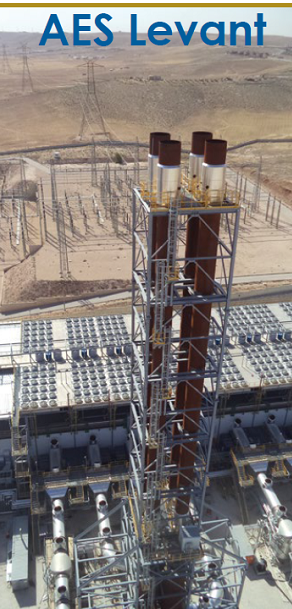Ammonia consumption reduced without compromising NOx emissions
 Challenge. Jordan’s AES Levant IPP, located near the Amman East Power Plant profiled in this issue, is configured with 16 diesel engines capable of operating on heavy fuel oil, distillate oil, and natural gas. Each of the recips has a dedicated stack and is equipped with a selective catalytic reduction system (SCR) for keeping NOx emissions within regulatory limits.
Challenge. Jordan’s AES Levant IPP, located near the Amman East Power Plant profiled in this issue, is configured with 16 diesel engines capable of operating on heavy fuel oil, distillate oil, and natural gas. Each of the recips has a dedicated stack and is equipped with a selective catalytic reduction system (SCR) for keeping NOx emissions within regulatory limits.
With gas unavailable in the region, the 250-MW plant has run on heavy oil since commissioning in July 2014. One challenge associated with burning heavy oil: SCRs require significantly more ammonia for NOx control than they do when burning distillate or natural gas. The handling, unloading, and storage of ammonia were of concern to personnel because of its high volatility and noxious nature.
The plant, designed for peaking service and a capacity factor of 40%, was called on to run at 75% CF because of the gas supply issue—doubling the already large quantity of ammonia required to sustain operations. Compounding the challenge, ammonia was not available in-country; neighboring Israel was the only nation in the region able to assure reliable supply. The supplier there then raised the price of ammonia from $450 to $470/ton. Import of very large quantities of ammonia by sea was not an option because the capacity of the plant’s storage tank was only 32,000 ft³.
Solution. Engineering review confirmed that excessive ammonia injection promotes soot formation when burning heavy oil, given its constituents—including sulfur. This can have detrimental effects on SCR performance. Also, excess ammonia (high slip), deposited on flyash particles as ammonium salts, was in evidence in particulates that separated from the flue-gas stream and fell to ground near the stacks.
A testing program conducted by Levant staff that compared NOx emissions against ammonia injection values revealed ammonia use could be reduced by one-third and still satisfy environmental permit requirements.
This first stage of the plant’s ammonia-reduction plan complete, Phase 2 of the test program was initiated. One component of this ongoing effort concerns the relationship between NOx emissions and ambient temperature: The lower the ambient temperature the less NOx produced. Given the use of aqueous ammonia as the SCR reagent, thinking is evaporative cooling might have a beneficial effect enabling a further reduction in the amount of ammonia injected.
Additionally, more detailed analysis and calculations have determined the Phase 1 results may have been conservative and that a further reduction, albeit small, in the amount of ammonia injected may be possible.
Another part of the solution was to encourage one or more Jordanian companies to produce ammonia for plant use.
Results. The financial, safety, and environmental/health/housekeeping benefits of the first phase of the ammonia-reduction initiative were significant, including the following:
- A saving of $1-million annually in reagent cost.
- Ammonia deliveries reduced by 100 trucks per year.
- A significant reduction in particulate emissions.
Plus, success in sourcing ammonia from within Jordan at a contract rate of $400/ton, promises an additional cost benefit to the plant and the opportunity for the country to build a new industry and create jobs.
Results of the second phase of the ammonia-reduction initiative have not yet been quantified.
Project participants:
Mohammad Hammad, performance leader
Husni Qaseem, electrical and controls leader
AES Levant Power Plant
AES Levant Holdings BV Jordan
250-MW, tri-fuel, peaking facility consisting of 16 diesel engines located in Al Manakher, Jordan
Plant manager: Meftaur Rahman


